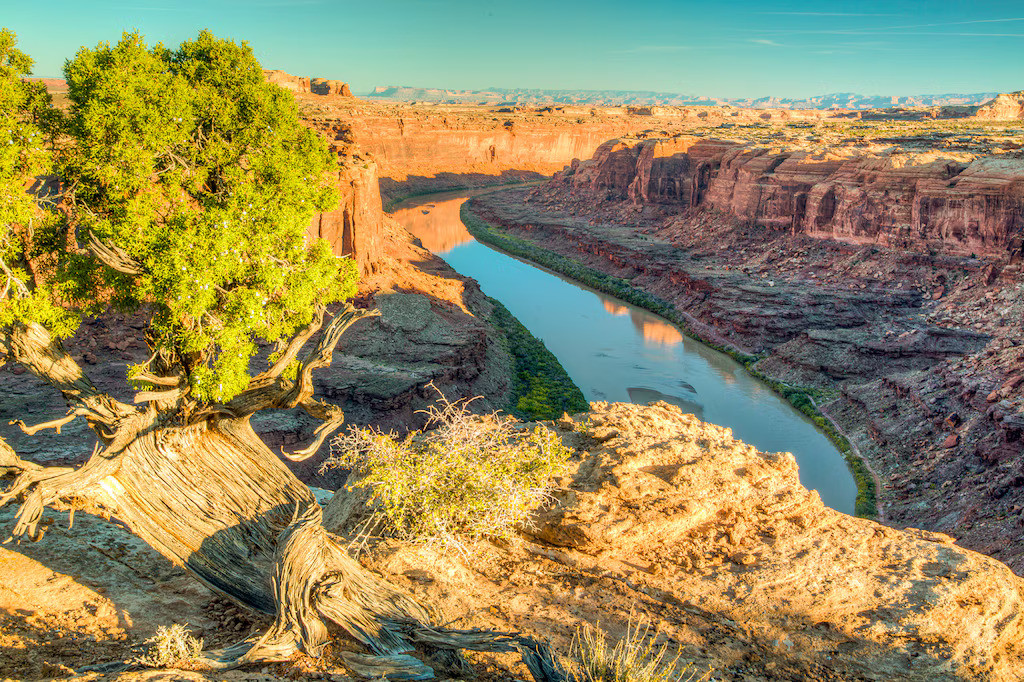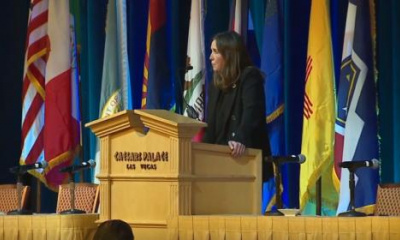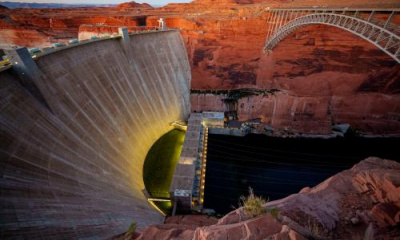A lithium boom in southeastern Utah is only getting bigger, and the mining companies involved in two new explorations for the mineral want to use a lot of water.
The Bureau of Land Management recently greenlit two lithium drilling projects in Grand County, and environmentalists fear each will have harmful effects on the sensitive landscape in Utah’s canyon country — and its limited water resources.
Lithium is an essential element for rechargeable batteries — needed in phones, computers and electric vehicles — that are considered crucial for a transition to clean energy. Typically, lithium mining uses water to rinse the mineral free from salty brines.
One of the recently approved projects is headed by A1 Lithium Inc., a subsidiary of Australia-based Anson Resources. This exploratory drilling — for which a previous application was rejected by the BLM — would take place on State Route 313, the main road that leads to Canyonlands National Park and Dead Horse Point State Park.
Environmental nonprofit Southern Utah Wilderness Alliance successfully objected that the first environmental review of the project had been insufficient.
Another Anson subsidiary, Blackstone Minerals, bought 140 acres of private land in Green River for $2.4 million to drill for lithium. The Utah state engineer approved water rights for that project in mid-September.
The other exploration project on BLM land is headed by American Potash LLC, a Canadian company, to look in the Labyrinth Canyon region for lithium and potassium-bearing minerals used in fertilizer.
Landon Newell, a SUWA staff attorney, said the nonprofit believes the new BLM approvals “completely fail to give this remarkable landscape the respect it deserves.”
The BLM will require the companies to plug the exploratory drilling holes and rehabilitate the landscape. Both exploratory projects should be completed within two years, according to the agency.
If the companies find economically viable minerals they want to extract, they must get separate permits for mining from the BLM, which would also be subject to public comment under the National Environmental Policy Act.
“The BLM is tasked with ensuring public lands serve multiple sustainable and dynamic uses,” said Moab Field Manager Dave Pals, “whether those are recreation-based activities or opportunities for responsible mineral and energy development.”
A1 Lithium’s project
In 2021, A1 Lithium asked the BLM for approval to explore lithium content in brines near Dead Horse Point State Park. The BLM initially agreed, but after the a SUWA appeal in 2022, the agency set the first decision aside in 2023.
The BLM then took a closer look at the project’s impacts on water resources. On Sept. 30, the agency approved the project.
A1 Lithium did not respond to multiple requests for comment.
“For years, we’ve defended the landscape surrounding Canyonlands National Park from oil and gas development. Now, that same landscape and the water flowing into the park face new threats from industrial mining operations,” said Erika Pollard, campaign director for the southwest region at the National Parks Conservation Association, in a statement.
“Greater discretion should ensure development does not turn national park landscapes into industrial zones,” she added.
The BLM acknowledged people and wildlife will see and hear the project for about five months of the two-year exploration. Pals said infrastructure on the site will be painted to blend with the landscape.
Noise pollution from the project, he added, is not expected to reach Canyonlands National Park or Dead Horse Point State Park.
The BLM’s environmental assessment of A1 Lithium’s exploration estimates the “total amount of water proposed to be used or extracted during exploration operations” is about 24,190 gallons. The water use for this project, Pals added, will represent 0.000002% of the available water resources within the Mesozoic aquifer system.
The company’s sister subsidiary under Anson Resources, Blackstone Minerals, claims that it will consume no water while extracting lithium in Green River. The Utah state engineer has required the company to measure how much water it uses and how much water it returns to the ground to prove its “non-consumptive” use.
During a three-month period when the governor-appointed state engineer was reviewing Blackstone Minerals’ project, Utah Gov. Spencer Cox’s reelection campaign accepted a $10,000 donation from A1 Lithium, according to state campaign finance records.
American Potash’s project
American Potash’s project, located near the Labyrinth Canyon stretch of the Green River, will use substantially more water than A1 Lithium’s.
The company plans to drill four holes on about 13 acres. The BLM estimates that “the total amount of water that would be used for all proposed exploration operations” will range between 1.68 million and 3.78 million gallons.
The conservative estimate is enough water to fill two-and-a-half Olympic-sized swimming pools.
“These projects require millions of gallons of water from an already over-allocated Colorado River Basin,” said Cody Perry, associate director of Living Rivers, in a statement. “As with any major water project in the arid West, fundamental questions about water availability, equity, and sustaining ecosystems in the drier, more unpredictable hydrologic reality we are experiencing must be seriously scrutinized.”
In response to water usage concerns, Pals said that American Potash’s water for this project will come from the Mesozoic aquifer system, and only use 0.00004% to 0.0001% of its available resources.
Simon Clarke, president and CEO of American Potash, said the project “is several miles away from the Labyrinth Canyon Wilderness and that our exploration and development activities will not impact that area in any way.”
The BLM reported that the Labyrinth Canyon Wilderness is 1.6 miles away from American Potash’s nearest drill pad.
Clarke added that the company “will utilize latest techniques, technologies and practices to minimize environmental impacts in all ways, including water consumption,” and will strictly adhere to the BLM’s environmental regulations.









